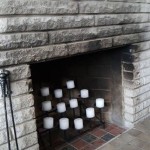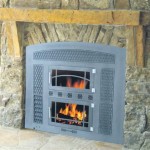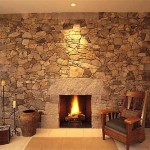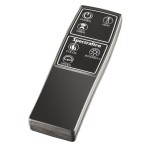The Enduring Appeal of a Limestone Brick Fireplace
A limestone brick fireplace represents a significant investment in home aesthetics and value. Combining the natural beauty of limestone with the enduring practicality of brick offers a unique blend of classic charm and modern functionality. This article explores the characteristics, benefits, design considerations, and maintenance aspects of limestone brick fireplaces.
Limestone, a sedimentary rock composed primarily of calcium carbonate, is renowned for its subtle color variations and inherent texture. Brick, traditionally made from clay and fired at high temperatures, provides structural integrity and heat resistance. The marriage of these two materials in a fireplace creates a focal point that is both visually appealing and functionally sound.
The appeal of a limestone brick fireplace transcends mere heating capabilities. It serves as a gathering place, a symbol of warmth and comfort, and a reflection of personal style. Its presence can transform a living room from a simple space into a cozy and inviting haven.
Aesthetic and Design Versatility
One of the primary advantages of limestone brick fireplaces is their versatility in design. Limestone, in its natural state, exhibits a range of colors from creamy whites and light beiges to subtle grays and even hints of gold. This natural palette complements a wide spectrum of interior design styles, from traditional and rustic to contemporary and minimalist. The brick component can further enhance this versatility. Different brick colors, textures, and laying patterns can be incorporated to create a truly customized look.
The texture of the limestone itself can vary, offering options for smooth, honed surfaces or more rugged, natural cleft finishes. Similarly, brick can range from smooth, machine-made versions to rough, handmade varieties. This flexibility allows homeowners to select combinations that perfectly align with their aesthetic preferences.
Moreover, the size and shape of the limestone and brick used can be customized to fit the dimensions of the room and the desired scale of the fireplace. Larger limestone blocks can create a grand, imposing statement, while smaller bricks can lend a more intimate and understated feel. The firebox opening can also be tailored to accommodate different fire sizes and viewing angles. The incorporation of a limestone mantel can add another layer of visual interest and provide a practical surface for displaying decorative items.
Furthermore, the design can integrate architectural details such as arches, corbels, or intricate carvings to further enhance the overall aesthetic. The combination of limestone and brick allows for a wide range of design possibilities, ensuring that the fireplace seamlessly integrates with the existing décor and architectural style of the home.
Structural Integrity and Heat Performance
Beyond aesthetics, limestone brick fireplaces offer significant benefits in terms of structural integrity and heat performance. Brick, as a time-tested building material, provides a robust and durable foundation for the fireplace. Its ability to withstand high temperatures makes it an ideal material for the firebox and chimney, ensuring safe and efficient operation.
Limestone, while not as heat-resistant as brick, contributes to the overall structural stability of the fireplace. Its density and strength provide a solid framework for the mantel and other decorative elements. When properly installed, a limestone brick fireplace can withstand the rigors of daily use for many years.
The thermal mass of both limestone and brick contributes to the fireplace's ability to retain and radiate heat. This means that the fireplace will continue to provide warmth even after the fire has died down. This radiant heat is more efficient and comfortable than forced-air heating, creating a cozy and inviting atmosphere in the room.
The design of the firebox and chimney also plays a crucial role in the fireplace's heat performance. A properly sized firebox ensures efficient combustion and minimizes smoke production. A well-insulated chimney prevents heat loss and ensures that the smoke is effectively vented out of the house. These design considerations are essential for maximizing the fireplace's heating capabilities and minimizing energy waste.
It's crucial to involve qualified professionals, such as masons and chimney sweeps, in the installation and maintenance of a limestone brick fireplace to ensure its safe and efficient operation. Regular inspections and cleaning can help identify and address any potential problems before they escalate into costly repairs.
Installation and Maintenance Considerations
The installation of a limestone brick fireplace is a complex process that requires specialized skills and knowledge. It's essential to hire experienced masons and contractors who are familiar with the unique properties of limestone and brick. Proper installation is crucial for ensuring the structural integrity, safety, and longevity of the fireplace.
The installation process typically involves preparing the foundation, constructing the firebox and chimney, and laying the limestone and brick in the desired pattern. It's important to ensure that the fireplace meets all local building codes and safety regulations. A properly installed fireplace will provide years of trouble-free operation.
Maintenance is also a critical aspect of owning a limestone brick fireplace. Regular cleaning is necessary to remove soot and ash from the firebox and chimney. A chimney sweep should inspect and clean the chimney at least once a year to prevent creosote buildup, which can pose a fire hazard. The limestone and brick surfaces should also be cleaned periodically to remove dust and grime. Mild soap and water are typically sufficient for cleaning limestone, while brick may require more aggressive cleaning methods depending on the type of stain.
Sealing the limestone can help protect it from stains and water damage. A penetrating sealer will prevent liquids from being absorbed into the stone, making it easier to clean. However, it's important to select a sealer that is specifically designed for limestone and that will not alter its natural appearance. Proper ventilation is also crucial for maintaining the health of the fireplace. Ensuring adequate airflow around the fireplace will help prevent moisture buildup and promote efficient combustion.
Furthermore, it's important to use appropriate fuels in the fireplace. Seasoned hardwoods are the best choice for burning, as they produce the least amount of smoke and creosote. Softwoods, such as pine, should be avoided, as they tend to create more soot and creosote buildup. Burning trash or other materials in the fireplace can also be hazardous and should be avoided.

12f Splitface Na Limestone Fireplace Tracerystone Com

Remodel Your Fireplace In Natural Stone Use

Tumbled Weatheredge Limestone Fireplaces Accent Walls Colonial Brick Stone Inc

Limestone Fireplace Colour Reference Soft Beiges And Sands Brick Makeover

Cast Limestone Fireplace On Red Brick Wall Transitional Living Room

How To Whitewash A Brick Fireplace With Limewash

Limewash Stone Fireplace Makeover Bye Orange O Neutral Beauty Average But Inspired

Taupe Limestone Fireplace Brick Herringbone Firebox Design Ideas

Natural Stone Fireplaces Using Weatheredge Limestone Colonial Brick Inc

Cast Limestone Fireplace Surround Israel
Related Posts








